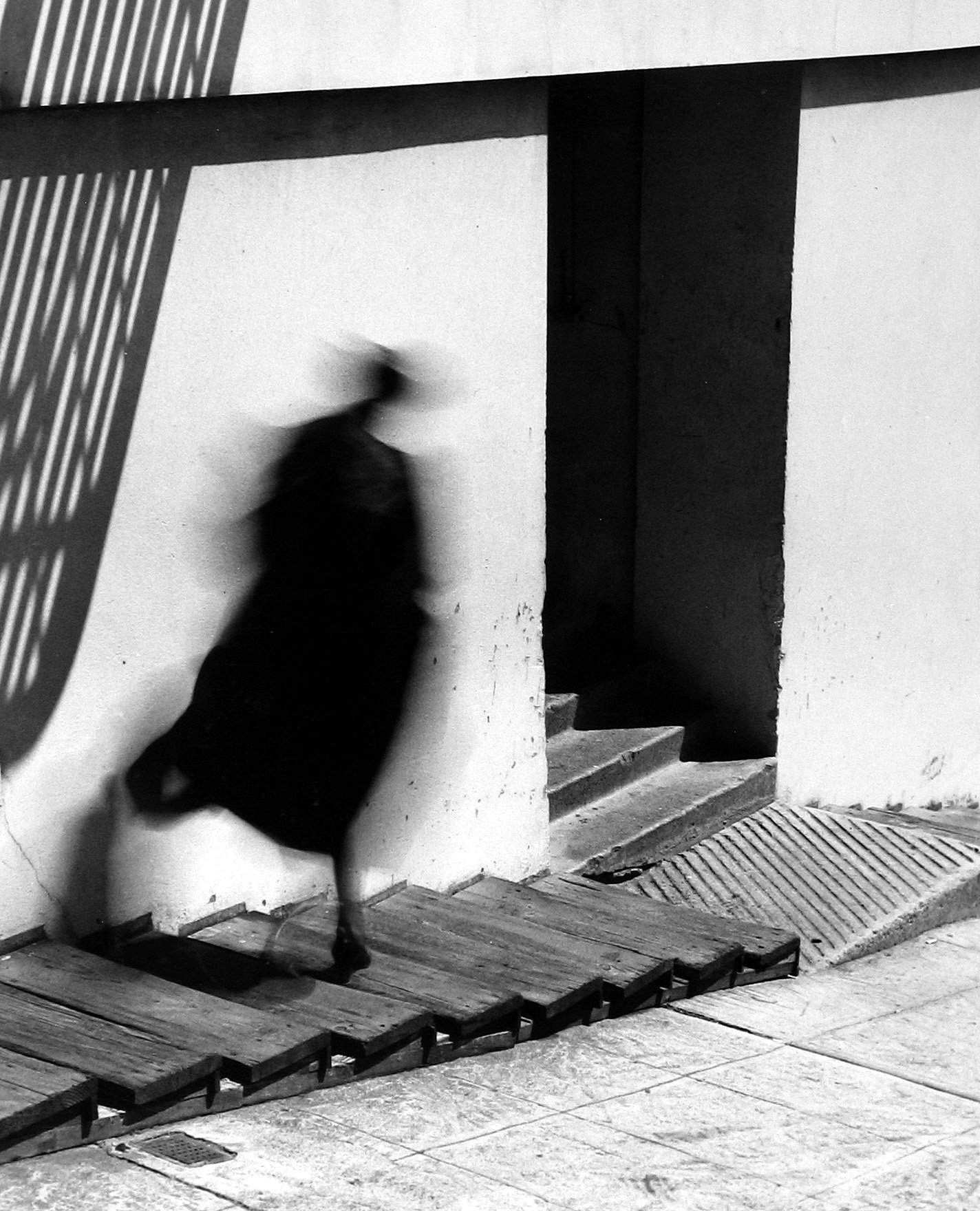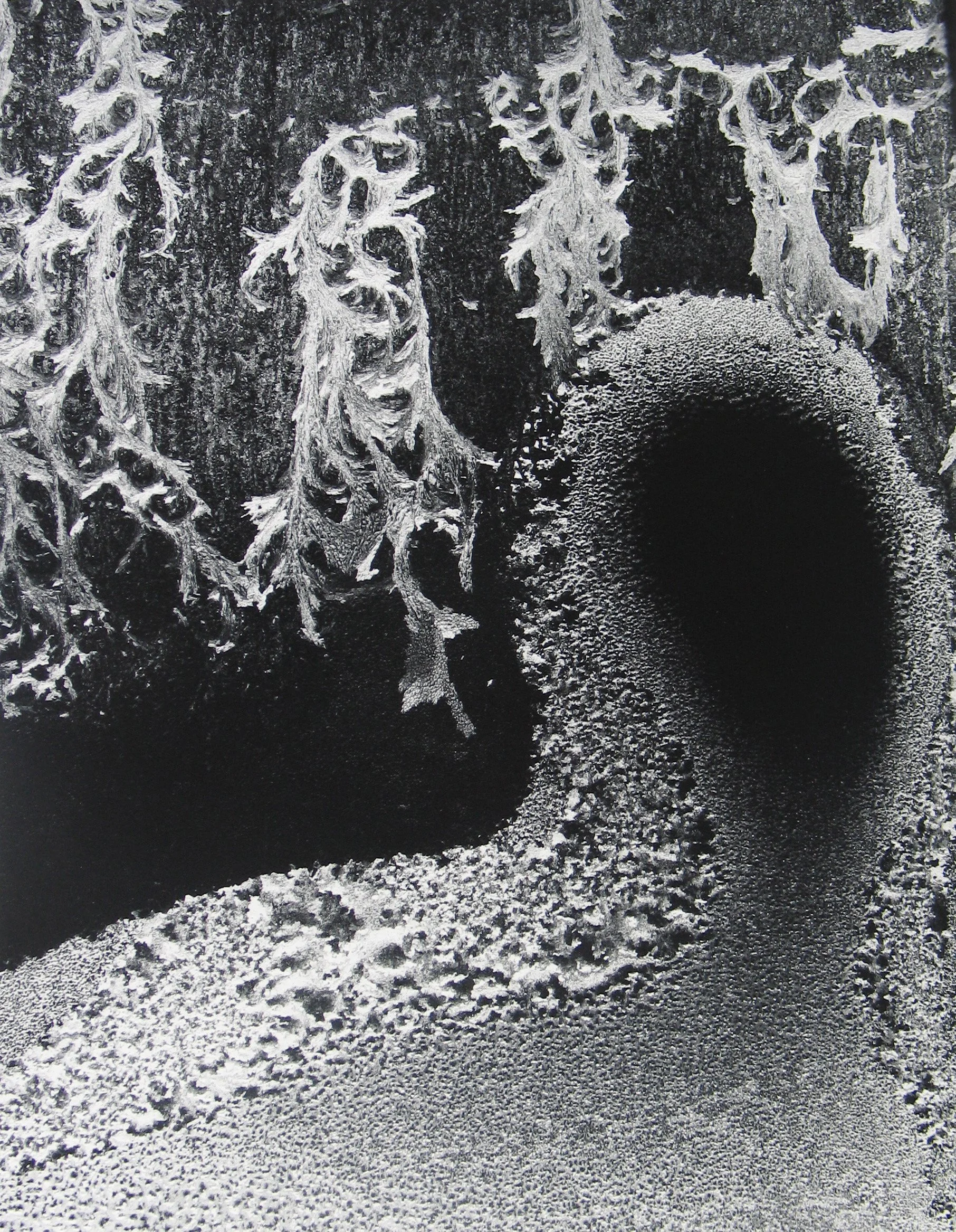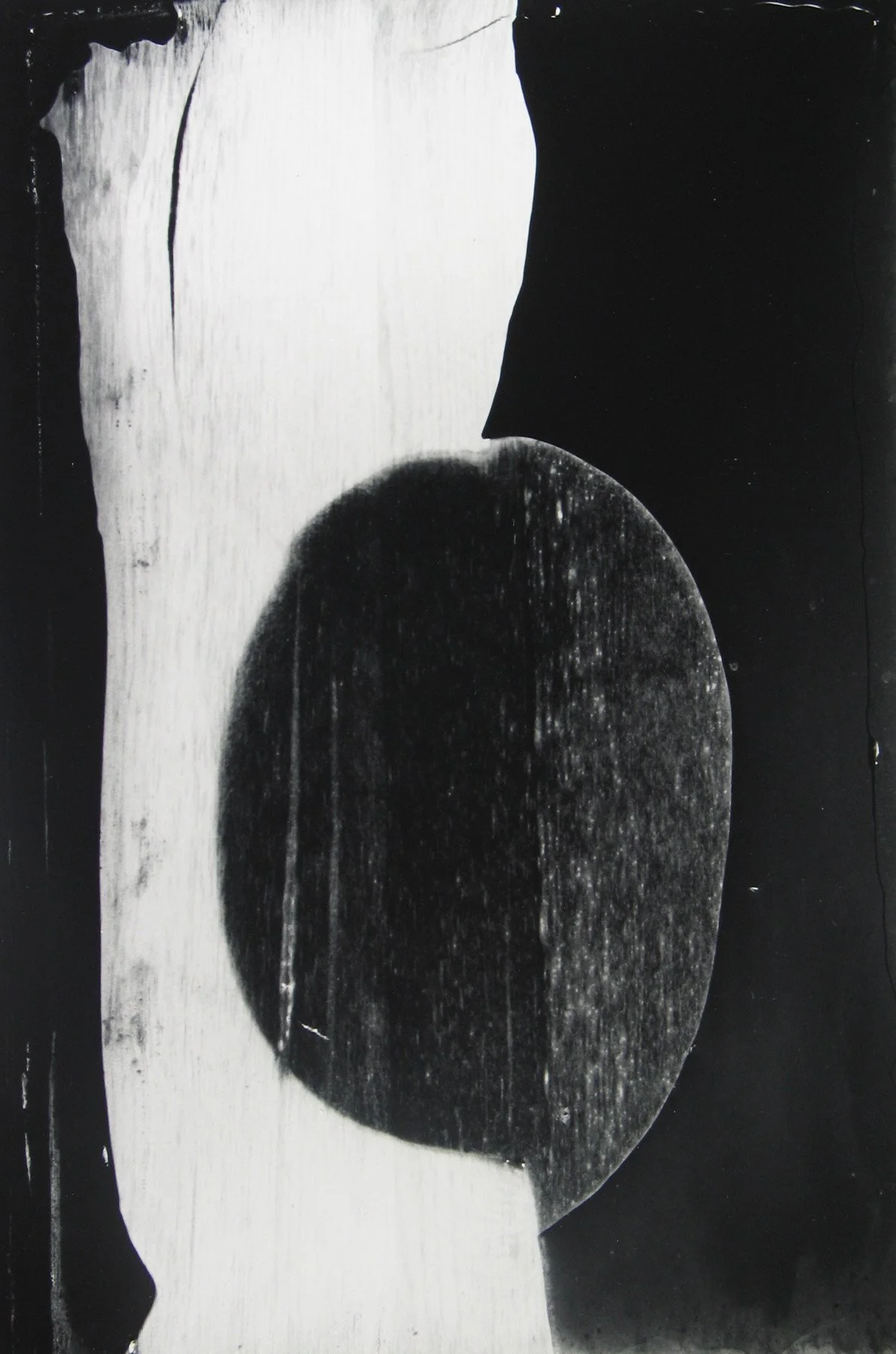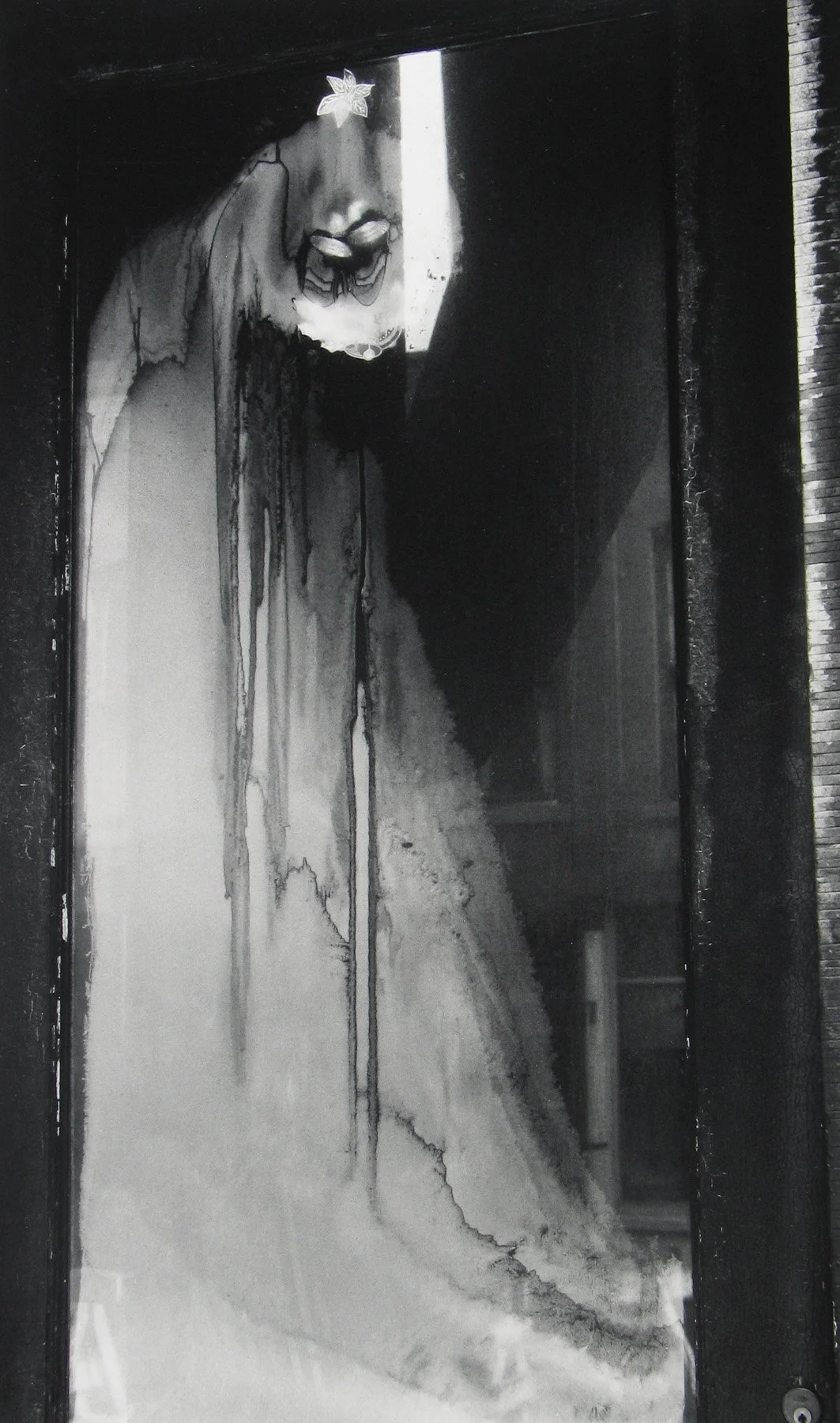Eye Mind Spirit Cover, Chiswick Auctions, 2020photobook analysis
Eye Mind Spirit
The enduring legacy of minor white
Edited by Nathan Lyons
Photography by Minor White
Published in 2018
Eye Mind Spirit provides a broad overview of the photographic works of the late Minor White. Images collated by a group of colleagues capture a tale of his photographic journey and definable style
73 N. Union Street, Rochester, New York, Minor White, 1958The cover
The cover of this book is composed of a rough red linen, a small landscape photograph pasted on its lower half beneath the title text. The book cover prioritises this text, as the most important piece of information, which it is given the book is a collection of White’s imagery. The chosen image becomes a clear choice once you have delved into the book, its abstracted black and white subject matter is a true representation of White’s work.
Bob Bright, San Pedro Point Marker, California, Minor White, 1947Photography
The first series “Song without words” feels like a silent stroll. The black and white landscapes each have patterns of dancing highlights connecting them, with strong contrast favouring blacks the photos feel distant and moody with a low sense of beauty. The two portraits in this series feel almost awkward and tired, like they were taken during a hike, both figures have this look of weariness in their eyes. The subjects even seem lost in. a way. Swallowed up by their expansive surroundings
Sound of One Hand: Empty Head, Rochester, New York, Minor White,1962Photographs between pages 37 and 50 are all rather abstracted. They depict tight landscape features and close-up organic forms. They feel like a collection of images the photographer has taken inspired simply by the natural beauty around him. They feel like they were taken through a stream of consciousness process. Like trinkets captured on his travels. The series “The sound of one hand clapping” in particular is extremely abstracted. Almost completely un-identifiable besides the occasionally helpful caption. These photos feel like a collection, of textures and interesting things. Like a puzzle the viewer must put together and unfold. One that can only be told when seen in a sequence.
Sound of One Hand: Metal Ornament, Pultneyville, New York, Minor White,1957What style of photography?
The works represented in this book are all of a slightly hazy black and white look. Many including movement as a key element. The images capture a variety of subject matter, though most commonly capture landscapes with the occasional person allowed entry into the scene.
What are the key images?
Page 31’s ‘Movement Studies Number 56, San Francisco, 1949’ is a key image for me. It makes a shift where White lets a figure into his images, though keeping them still abstracted through movement blur.
Otherwise the image: ‘3 N. Union Street, Rochester, New York, 1958’ feels like a strong representation for his body of work as a whole. The image has a sort of curious abstraction to it. The subject matter unidentifiable. This image also happens to be the cover image.
Page Layout
Between each series catalogued, a black page allows pause. Letting viewers transition with intention between projects.
Each photograph has been centred on their page, with appropriate margins no matter the ratio or orientation of the image used. Images are displayed in pairs, one on each page of a spread. These images were often connected by subject matter, context or linked aesthetic attributes. Each spread is highly intentional.
Movement Studies Number 56, San Francisco, Minor White, 1949Editing and sequencing
What Is the narrative?
Rather then an explicitly shared narrative. This book catalogues the work completed by White over his career. Showcasing a love for light and texture and a talent for evoking emotion through his images, no matter how abstracted.
Does it seem haphazard or intentional?
The pairings are highly intentional, assigning images together based on series, location and texture or movement.
It is very visually satisfying to look at as a viewer.
Sound of One Hand: Empty Head, Rochester, New York, Minor White, 1962Shore Acres, Oregon, Minor White, 1960Have pairings been used?
Other then those in a deliberate series. Images seem to favour geometry or the technique and play of light used. Pages 30 and 31 both include a sense of movement with blurry figures against high contrast, bright building facades. Both have a sense of transition and passing.
The pairing on page 58 and 59 is really successful. The images, each titled “Shore acres, Oregon 1960, both have this overwhelming grey and sense of gloom. Both coastal and expansive. The photograph to the left features a seascape with a lone bird flying beneath the long cloud above. It feels lonely and ominous. Waves crash in the foreground creating drama and movement to break up the pause and stillness the bird seems to have despite is flight. The image to the right shows what appears to be an aerial perspective of a large beach. Highlighting the textures of rocks and shells across the area. The tide lines evident and poetic across the sandy expanse. This section fades into a rich, dark sea leaving the viewer wondering what is beyond. A question tentatively answered by the image to the left. Their tonal values align at their meeting point, connecting them well.
Sound of One Hand: Rochester, New York, Minor White, 1959Text
what has been included?
The first 15 pages are largely text based with informative, largely biographic essays by Peter C. Bunnell (the preface), Nathan Lyons (a personal essay), and Howard GreenBerg (Acknowledgements).
The essays give insight into White’s life as a photographer and his connection to the artform.
In some of White’s exhibition’s curator’s words, “They carry with them a special beauty and spiritual power; they seem to arise from an enormous and private artistic need. The photographs, like certain poems, have the aura of a voice.” (Peter C. Bunnell)
what is the text and image relationship?
Each photograph has a small caption beneath it. These feature the title, usually the location or person, then date followed by the series. From these we gain context for the photographs and a glimpse of into the intention or narrative behind them. This is important given the cataloging nature of the book, and the sheer amount of variation we see of White’s work here.
What fonts have been used?
A serif font has been used, with image titles in Italics. The use of a serif font works well to portray the historic and archival nature of the photographs, matching that tone visually.
Overall Design
How has scale been used?
His photographs are allowed significant breathing room, white space framing them on the page. Given their richness it allows each to sit individually or in their pairs. Allowing the rich blacks within the photos room to breath as well. It lifts the book, adding light against dark.
The book is a light hand held size with a squaring format.
What paper stock?
Printed on 100# Job Parilux silk text
Has a satin finish, not to shiny but not entirely matt. The paper allows for a rich amount of contrast without loosing detail to glare.
The pages are fairly thick, and plasticy feeling.
Sound of One Hand: Batavia, New York, Minor White, 1958Have end sheets been included?
Black end sheets begin and conclude the book, working cohesively against the monochromatic photography inside. It is made of a thicker
Has a colophon been included?
The book includes a colophon detailing the sourcing and licencing of the photographs as well as recognising the people involved in creating, designing and publishing the book. Details on paper type are also included here.
Personal reflection
What I found to be most interesting about this book was the use of abstracted imagery to suggest a feeling or mood. I also appreciated the use of sequencing, how each sometimes unrelated photograph flowed onto the next seamlessly. This made me consider how I may use similar principles to create flow and reduce repetition in my own book.









